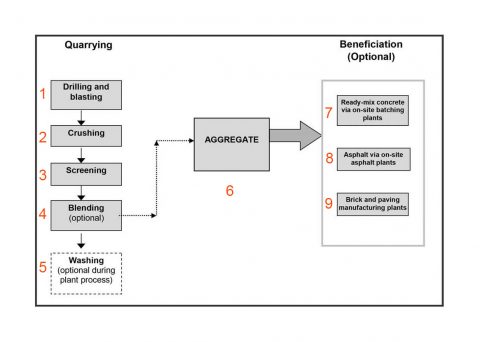

What is sand and aggregate?
Aggregate refers to the different sizes of stone that are used in the building, construction and road-making industries while sand is the collective name given to finer grain size components. Ninety percent of sand will pass through a square sieve with an aperture size of 4,75mm, whilst at least ninety percent of the coarse stone will be retained by such a sieve.
The widespread use of aggregate results not only from its general availability but also from economic considerations. Aggregate of good quality is commonly available near the site of use at relatively low cost. Because the profitable exploitation of aggregate is very sensitive to transport costs, quarries were traditionally located on the outskirts of cities and towns. In numerous instances, these deposits have been depleted and new sources further away had to be found, often resulting in greater transportation costs. Urban development itself has, in recent times, been responsible for the rapid depletion of readily available deposits.
Hard rock aggregate quarries are often located on the slopes of hills and mountains, usually resulting in the defacing of areas of natural scenic beauty. Growing environmental awareness increasingly influences the exploitation of such resources in localities of this nature.
How is aggregate and sand produced?
Most hard rock material used to produce coarse aggregate is sourced from open pit quarries and waste dumps. Quarrying usually requires drilling and blasting, after which the rock is extracted by means of bulldozers and draglines. The broken rock is transported to a processing facility and the material goes through several stages of crushing and sizing. In some instances, blending is necessary to produce a specific customer specification.
Natural sand is usually mined with conventional earth-moving equipment. The quality and final use of the sand usually determine the amount of processing necessary. Washing and
screening are used in some instances to produce a better quality sand.
It is now a common practice to further beneficiate the aggregate into:
• Ready-mix concrete,
• Asphalt,
• Bricks and paving material.
